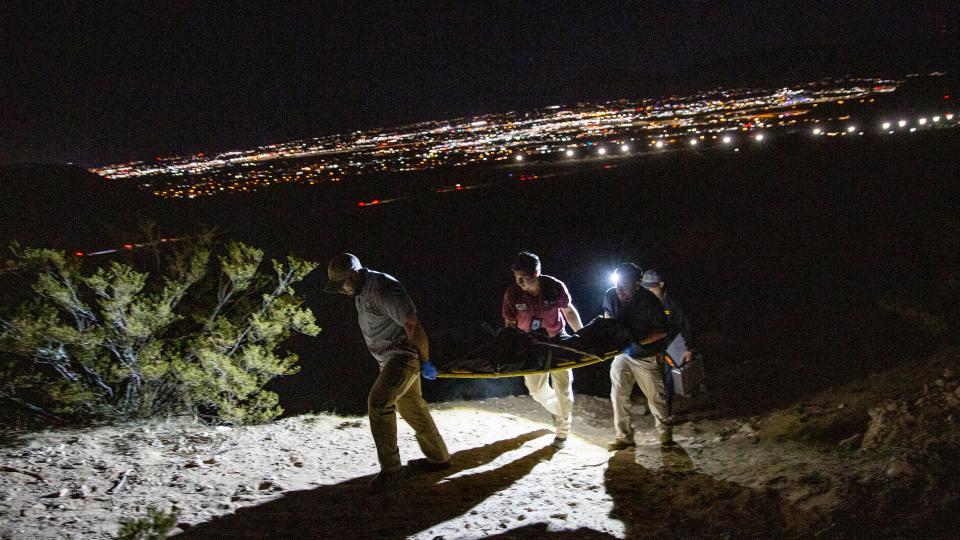Drownings in Rio Grande: They're 'ditch riders' by trade but often find migrant bodies
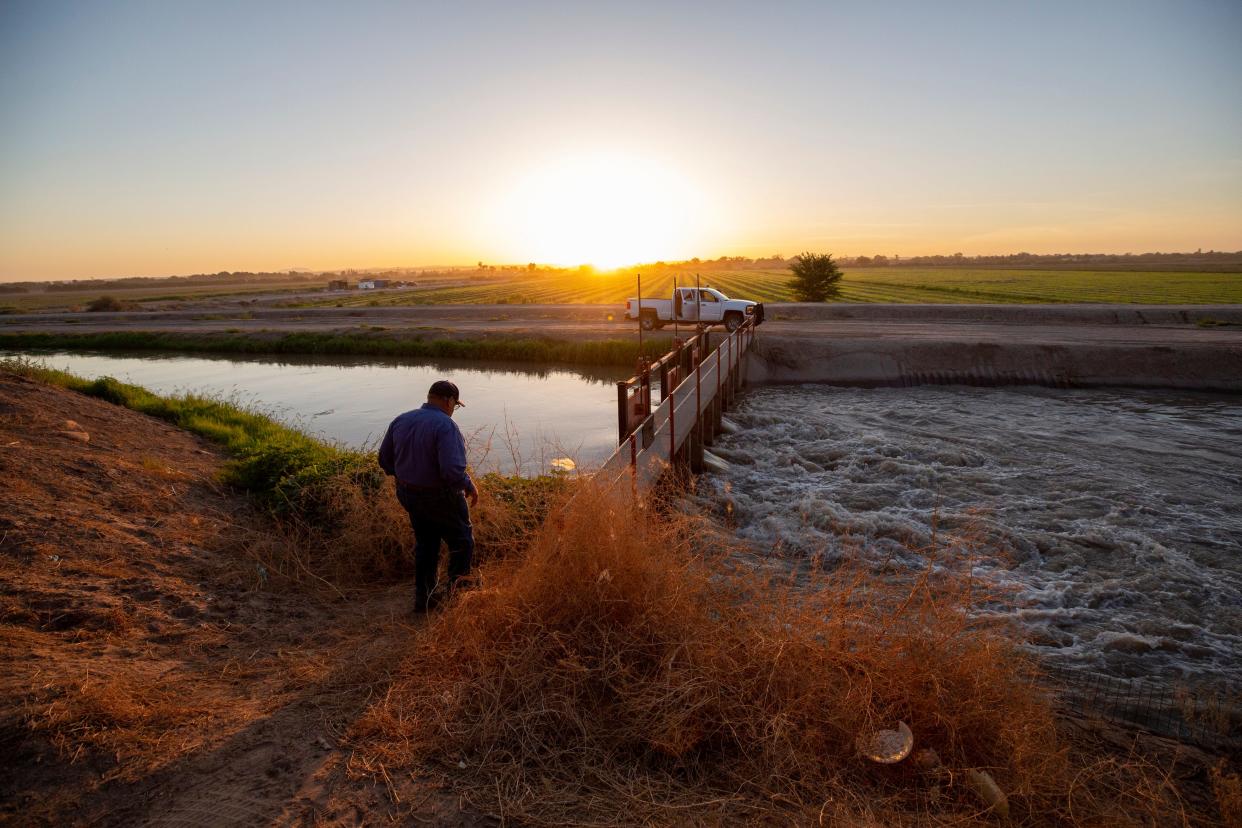
This story was republished on Jan. 5, 2024, to make it free for all readers.
Editor’s note: This story contains reporting that some readers may find disturbing.
Robert Rios knows the Rio Grande as few do: its vagary and speed, its awesome power to give life and take it away.
The flow of the Rio Grande has been steered by humans for a century. Rios, the water master for the El Paso County Water Improvement District No. 1, has been behind the wheel for 52 of those years.
Rios manages the “ditch riders” who monitor the water levels and control the irrigation gates on canals that crisscross farmland and neighborhoods north of the U.S.-Mexico border.
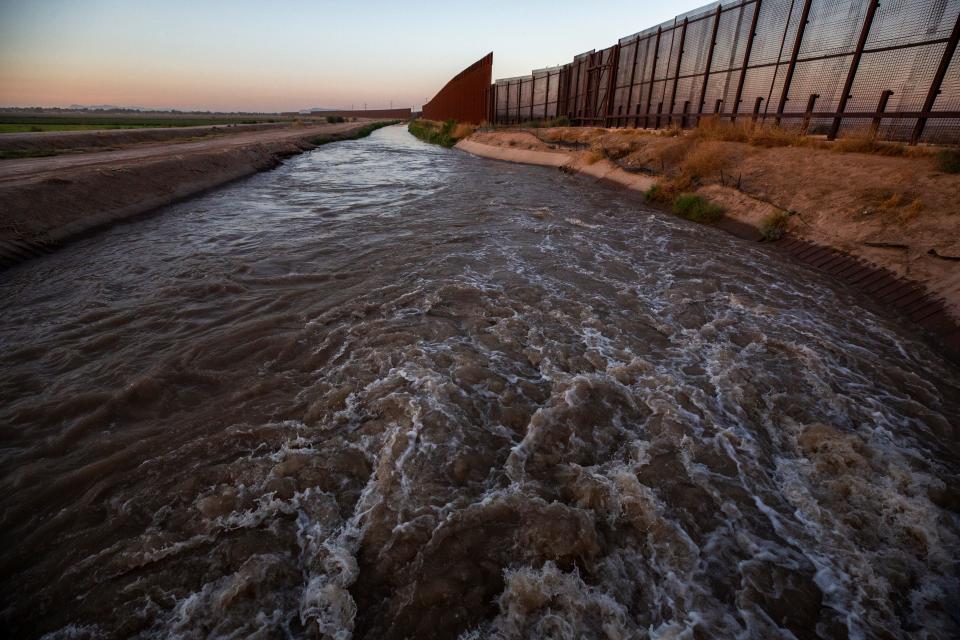
He takes water orders from farmers during the summer months. And he takes the call when the ditch riders find a body in the river. As sure as the water rises, they find the dead in the river. "Floaters," they call them.
"From the time they drown, they go down," said Rios, whose last name in Spanish means "rivers." "They don’t surface until a couple of days later, about three days after they drown. Until they float."
Most of the time, the bodies belong to migrants. People who traveled hundreds or thousands of miles across the continent, who braved jungles and raging rivers only to be deceived by a placid-looking canal the width of a backyard swimming pool. People who couldn't know that under the surface runs a current that will claw them under.

In El Paso's deadliest-ever year for migrants, the Rio Grande claimed at least half a dozen people, according to Jay Ornelas, the irrigation district's general manager.
Neither the irrigation district, the El Paso County Sheriff's Office, nor the El Paso Police Department track migrant deaths and none of the agencies responded to requests for reports on the deaths. But Rios remembers that, last year, he stopped counting the bodies of the drowned – the majority, likely migrants – at 43.
"We try to get the word out to people," Ornelas said. "In years past, we would go to Juárez and hand out fliers in Spanish in our neighboring country to make sure they are well aware of the dangers."
More: Flyers warn migrants of drowning dangers from Rio Grande, canals in El Paso area
Rios and the 25 ditch riders for District No. 1 aren't first responders, emergency workers or undertakers and yet they all know the smell of death.
"It’s something you can’t shake," Rios said. "It stays with you. You can go home and your wife can make you soup and it smells like a body."
The Rio Grande 'just sucks you down'
Where the river bends around Mount Cristo Rey into Texas, the Rio Grande becomes the U.S.-Mexico borderline.
Each spring, water managers release water from the Elephant Butte Reservoir 130 miles north of El Paso, and the water crawls into the wide, dry bed of the Rio Grande in New Mexico. Rios and the ditch riders divert the river into concrete and earthen channels that rush water to farms like blood through veins, nourishing crops including alfalfa and onion. They ride the river banks from the New Mexico-Texas state line, through urban El Paso east into the Lower Valley.
The river travels a mile per hour in its natural channel but speeds up in the constructed V-shaped concrete canals, which pose the greatest risk to anyone who jumps or falls in the water, Ornelas said.
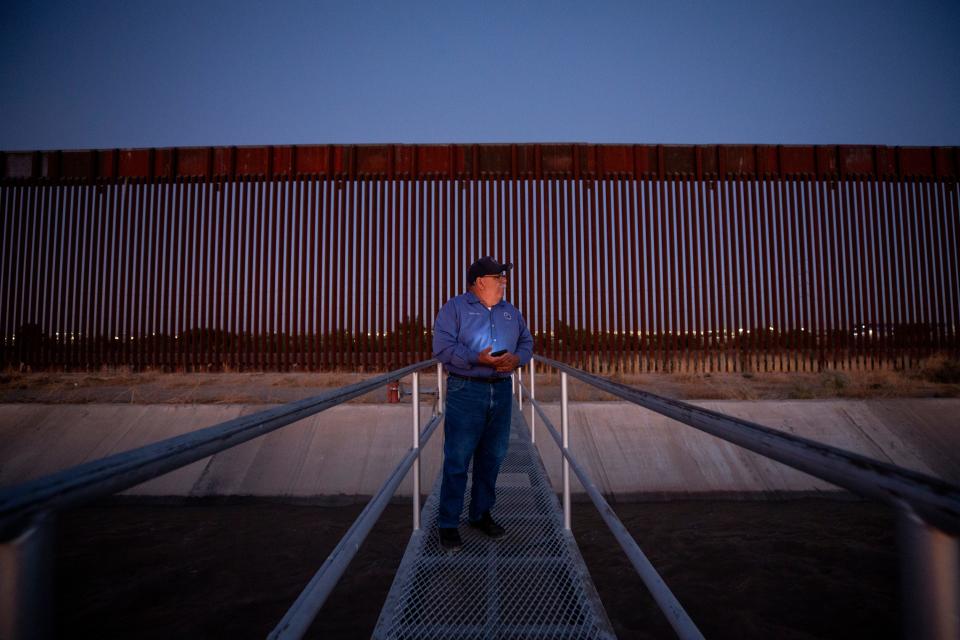
"We open the gates and pressurize the canals upstream," he said. "On the surface it looks calm, but the gate just sucks you down."
He explained the science: "One cubic foot of water weighs 62.4 pounds. If the canal is 10 feet deep, that is 624 pounds of pressure sitting on you. You multiply that by the width of the canal – say it is 10 feet wide – and you are looking at 6,240 pounds of pressure.
"It is extremely, extremely heavy force," Rios said.
A man drowns at the river gate
All day and all night the ditch riders monitor the canals.
They drive along the levees and watch the numbers glow on a digital telemetry site that measures water levels in real time. Rios started managing the river before that technology existed and can spot when a ditch is low by even an inch or two, but he watches the telemetry on his cellphone, too.
"You don’t want it to get out of control," Rios explains. "You want to monitor it. We’re ordering water for ourselves, we’re ordering water for Mexico" – he pronounces the country name in Spanish, Mejico – "we’re ordering water for the city of El Paso, we’re ordering water for New Mexico. We’re bringing it down. We don’t let no water get past us."
On a summer day before dawn, Rios met up with supervisor Enrique Perez at the head gate known as the Repartidor, a nickname that means "delivery man" in Spanish.
The rusted steel border fence stood to the south within view, 30 feet tall. The river churning through the irrigation gates produced a deafening roar in the morning darkness. Rios' truck headlights illuminated the gates, where the placid canal surface spilled into powerful whitewater.
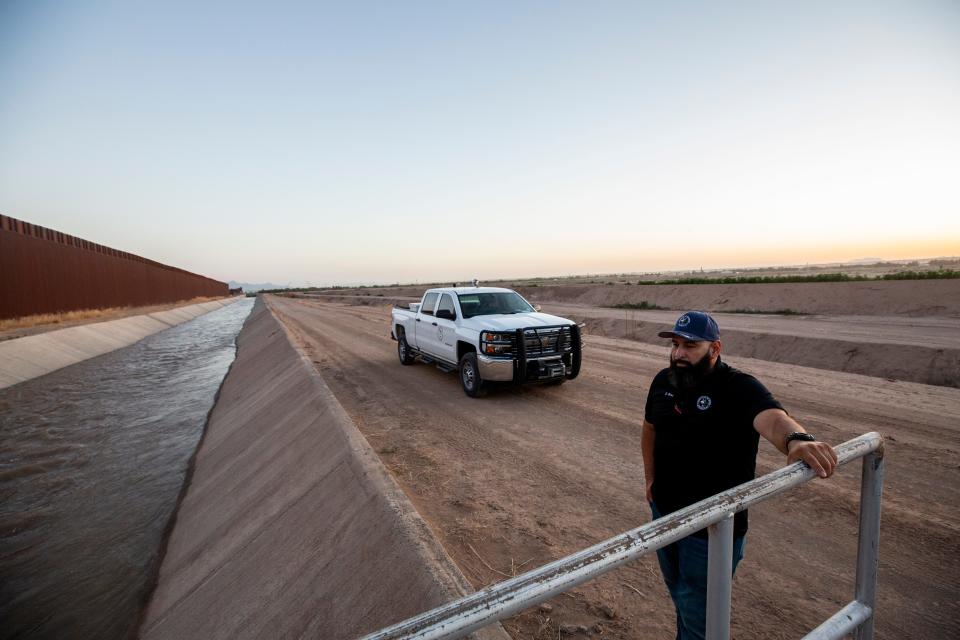
Eight days earlier, someone was pulled under at this spot.
Border Patrol reported to the irrigation district that someone was in the canal near the Repartidor around 3 a.m. on July 11.
Perez was the night supervisor and responded.
"He went under and they lost him here," Perez said, pointing to the water roaring through the gates. "They eventually found him floating downstream."
A firefighters' water rescue team pulled out the body around 5:30 a.m.: a man in his 20s, unidentified.
'It's better to wait for help'
Rios has mentored Perez and other supervisors. But the bodies of the drowned is something for which Rios can't prepare them; they can only learn from experience.
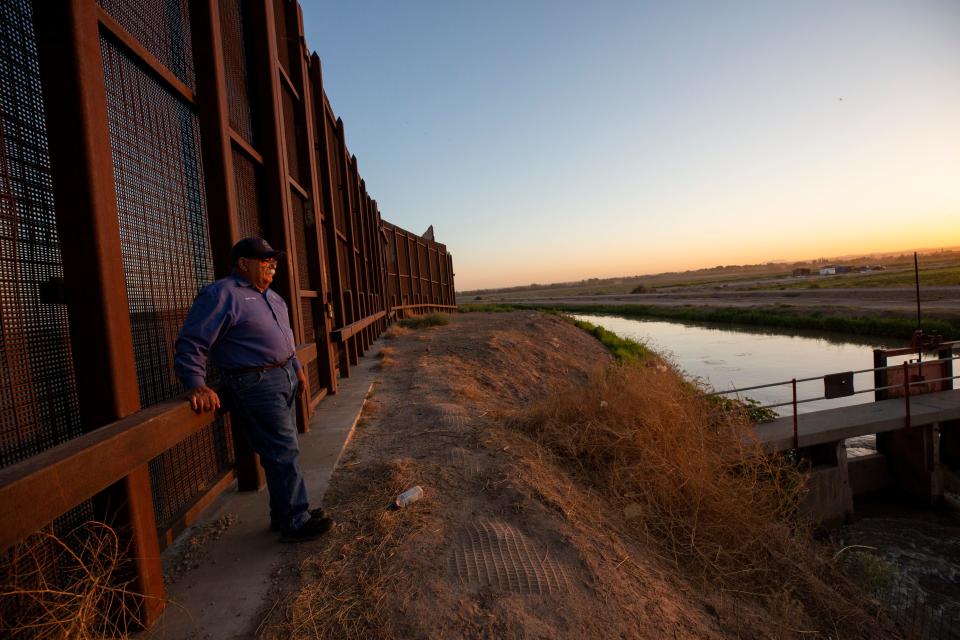
Sometimes migrants mistake the ditch riders for Border Patrol, and they ask for help. The 30-foot border fence has slowed down the movement of migrants through the industrial and agricultural land east of El Paso, but still they come. The evidence is everywhere: fence holes cut by smugglers patched with welded steel mesh, rope ladders hung from the top.
Perez said he tries to warn migrants about the canals, whenever he can, before they make a fatal mistake.
"If you ever see water, just don’t get in," he said he tells them. "Es peligrosa el agua. Tiene mucha corriente. The water is dangerous. It has so much current. Don't get in. It's better to wait for help than to risk your life."
Part 6:
Family decries deadly violence migrants face in Juárez on journey to US
Aline Simerman
EL PASO TIMES
JUÁREZ — Her thin body was found lifeless and abandoned in a ravine in the impoverished border community of Lomas de Poleo, an area that undocumented migrants frequently traverse to cross from Juárez to Sunland Park, New Mexico.
With brown skin and dark hair, dressed in athletic clothes and blue socks but no shoes, the young woman in her 20s was lying on her back in the sand. A thick stream of blood, now dry, ran from her nose and her forehead and pooled beneath her head. Cuts on her right arm were visible through the torn sleeve of her hoodie.
"I was looking for her purse or backpack, shoes, an identification, but she had nothing with her," a state police investigator said at the scene. "This is a popular route toward the United States."
This article originally appeared on El Paso Times: Rising migrant deaths 2023: 6 lives lost in Rio Grande canals
